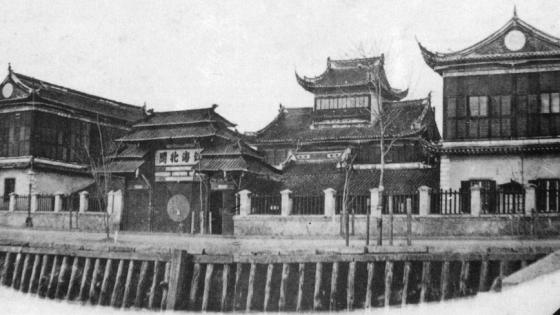By the early 20th century, China was the last major economy still operating under a silver standard, while most of the world had already transitioned to gold or fiat currencies. However, in 1934, a new U.S. silver policy—the Silver Purchase Act—unexpectedly triggered a monetary crisis in China, forcing the country to abandon silver and adopt a fiat currency system in 1935. This event marked the final collapse of the silver standard on a global scale, demonstrating how a foreign monetary policy could destabilize another nation’s economy.

1. The Silver Purchase Act of 1934: U.S. Attempts to Boost Silver Prices
- Why Did the U.S. Government Start Hoarding Silver?
- During the Great Depression (1929–1939), the U.S. economy was struggling with deflation, high unemployment, and falling commodity prices.
- Western silver mining states (like Nevada and Colorado) were suffering from low silver prices, leading U.S. politicians to push for government intervention to support the industry.
- President Franklin D. Roosevelt saw silver purchases as a way to increase the money supply while aiding the mining sector.
- The Key Provisions of the Silver Purchase Act
- Signed into law on June 19, 1934, the Silver Purchase Act required the U.S. Treasury to buy massive amounts of silver to artificially raise its price.
- The Treasury was authorized to increase silver’s monetary role in the U.S. by issuing more silver-backed currency (silver certificates).
- These policies drove silver prices up, causing global effects—especially in China, where silver was the basis of the monetary system.
- The Impact on Global Silver Prices
- Before the Act, silver was trading at around $0.25 per ounce.
- By 1935, silver prices had nearly tripled, reaching $0.77 per ounce.
- This price surge created chaos in economies still relying on silver, most notably China.
2. The Economic Crisis in China: Silver Drain, Deflation, and Trade Collapse
- How Did Rising Silver Prices Hurt China’s Economy?
- China was still on a silver standard, meaning the value of its currency depended on the availability and stability of silver.
- As silver prices rose globally, Chinese currency (backed by silver) became stronger.
- A stronger currency led to deflation, making Chinese goods more expensive for foreign buyers, reducing exports and worsening the economic slowdown.
- The Silver Drain: Capital Flight and Banking Crisis
- With silver becoming more valuable abroad, investors and speculators began smuggling silver out of China to sell it in the U.S. at higher prices.
- Massive silver outflows drained China’s monetary reserves, creating a liquidity crisis in banks.
- Chinese banks began failing as silver reserves disappeared, leading to widespread financial panic.
- The Collapse of Chinese Trade
- As silver-backed Chinese currency appreciated, Chinese exports declined sharply, making economic recovery nearly impossible.
- Businesses struggled, unemployment rose, and the country faced growing financial instability.
3. China’s Response: The 1935 Currency Reform and the End of the Silver Standard
- Chiang Kai-shek’s Nationalist Government Takes Action
- By 1935, China’s economy was in crisis. The Nationalist government (Kuomintang, KMT), led by Chiang Kai-shek, realized that remaining on the silver standard was unsustainable.
- With the help of American and British financial advisors, China introduced a currency reform to abandon silver and stabilize the economy.
- The Introduction of the Fiat Currency System
- On November 4, 1935, China officially ended the silver standard and replaced it with a new fiat currency called Fabi (法幣).
- Fabi was no longer backed by silver but by government control and foreign exchange reserves, particularly British and U.S. financial backing.
- This move prevented further silver outflows, stabilized the banking system, and allowed China to regain control over its monetary policy.
- The Global Significance: The Final Collapse of the Silver Standard
- With China abandoning silver, no major nation remained on a silver-backed currency, marking the definitive end of the silver standard in world history.
- From this point forward, silver would never again be used as a foundation for national monetary systems, cementing its transition to a commodity rather than money.
4. The Long-Term Consequences of the Silver Crisis
- China’s Shift Toward a Modern Financial System
- While the new Fabi currency stabilized China in the short term, it later suffered from hyperinflation during World War II and the Chinese Civil War.
- Nevertheless, this transition was a crucial step toward a modern fiat monetary system, making China more compatible with international trade and finance.
- Silver’s Decline as a Monetary Metal
- The 1935 reform confirmed silver’s complete removal from global monetary systems, reducing it to a commodity rather than a currency standard.
- Although silver remained valuable in industry, investment, and bullion markets, it never regained its status as an official store of value for governments.
Conclusion: The Last Domino to Fall in the Silver Standard’s Demise
The Silver Purchase Act of 1934, meant to support American silver miners, had unintended global consequences, triggering an economic crisis in China, the last major silver-standard economy. As silver prices soared, China experienced deflation, financial instability, and a currency crisis, leading to the 1935 decision to abandon silver-backed money and adopt a fiat system. This moment marked the final collapse of the silver standard worldwide, ensuring that silver would never again serve as the foundation for national currencies.
